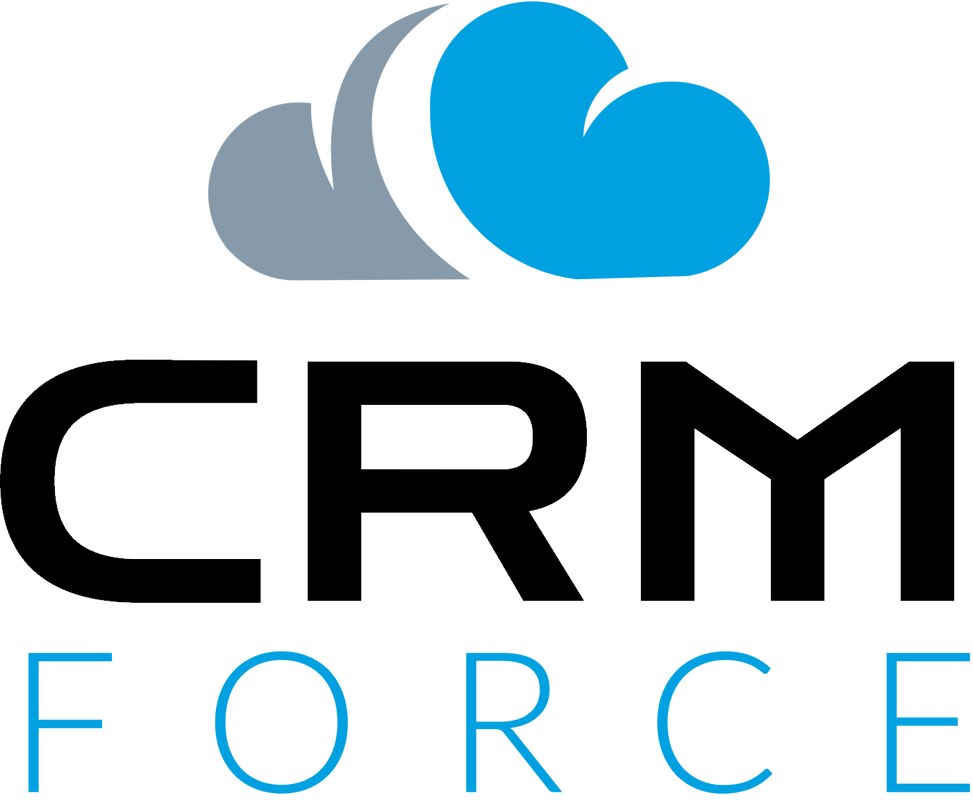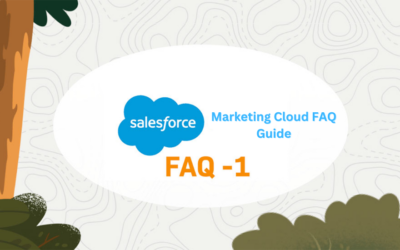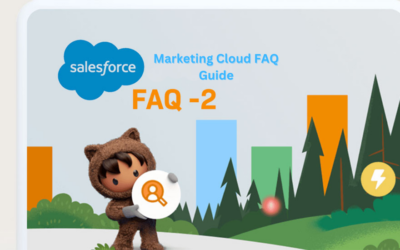In the ever-evolving landscape of digital marketing and customer relationship management, HubSpot stands as a pioneer, empowering businesses with a comprehensive suite of tools and solutions. As companies strive to reach their target audiences, nurture leads, and achieve sustainable growth, the role of HubSpot has become increasingly vital. Whether you are a seasoned marketing professional or someone new to the realm of marketing automation, you’ve likely encountered HubSpot’s powerful capabilities. In this FAQ guide, we embark on a journey to uncover the intricacies of HubSpot, delving deep into the technical aspects that matter most in the marketing world.
Our goal is to equip you with a wealth of knowledge, answering the most pressing questions related to HubSpot. From mastering the art of marketing automation and lead nurturing to harnessing the power of SEO and analytics, this comprehensive guide will provide in-depth insights and answers to 20 technical interview questions. By the end of this FAQ guide, you’ll be well-prepared to navigate the marketing world with HubSpot at your side, confidently leveraging its features to drive success and growth for your organization. Let’s dive into the intricate world of HubSpot, and unlock the secrets to becoming a proficient marketing strategist. If you need assistance with Salesforce CRM setup and optimization, companies like CRM Force can provide valuable expertise and support.
1- What is inbound marketing, and why is it important?
Answer: Inbound marketing is a customer-centric approach that focuses on attracting, engaging, and delighting customers through valuable content and personalized experiences. It’s critical because it fosters long-term relationships, increases customer retention, and builds brand loyalty, aligning perfectly with HubSpot’s mission.
2- What sets HubSpot apart from its competitors?
Answer: HubSpot’s distinctiveness lies in its all-in-one platform, its unwavering commitment to customer success, and its pioneering approach to inbound marketing. This combination empowers businesses to grow and succeed in an increasingly digital world.
3- What aspects of HubSpot’s inbound marketing philosophy resonate with you the most?
Answer: The emphasis on creating value, fostering customer relationships, and promoting long-term growth aligns with my core marketing beliefs. HubSpot’s inbound methodology complements its marketing approach, making it an ideal fit for me.
4- What are the key components of on-page SEO optimization, including title tags, meta descriptions, header tags, and internal linking?
Answer: On-page SEO optimization involves crafting compelling title tags, and informative meta descriptions, using header tags for structure, and strategically implementing internal links to enhance user experience and improve search engine rankings.
5- What are your recommendations for optimizing website performance in terms of page speed and mobile responsiveness, and why is this important for SEO?
Answer: Page speed and mobile responsiveness are critical for user experience and SEO. To optimize, recommend image compression, minification of CSS and JavaScript, and use responsive design to ensure a seamless user experience across devices.
6- What is the impact of duplicate content on SEO, and how would you deal with duplicate content issues on a website?
Answer: Duplicate content can harm SEO by confusing search engines and users. To address it, I would use canonical tags, 301 redirects, and content consolidation to ensure that the original content is prioritized and indexed correctly.
7- What is marketing ROI, and how do you calculate it for a specific campaign?
Answer: Marketing ROI measures the return on investment for a specific campaign. To calculate it, you subtract campaign costs from the revenue generated by the campaign and divide by the cost.
8- What are topic clusters, and how do you use them to create a content strategy that enhances SEO and user engagement?
Answer: Topic clusters involve creating pillar content around a central topic and supporting it with related subtopics. This approach enhances SEO and user engagement.
9- What are the main technical SEO considerations for optimizing a website for search engines, and how do you address issues such as page speed, structured data, and crawlability?
Answer: Technical SEO involves optimizing page speed by minimizing server response time and enabling browser caching, implementing structured data to enhance search results, and ensuring crawlability by using XML sitemaps and a robots.txt file.
10- What are quality score and ad rank in PPC advertising, and how do you improve these metrics to enhance campaign performance?
Answer: Quality score and ad rank are essential in PPC advertising. Quality score is Google’s measure of the quality and relevance of your ads and landing pages, while ad rank determines your ad’s position in the search results. To improve these metrics, focus on relevant keywords, optimized landing pages, and ad copy. Additionally, ensuring a high click-through rate (CTR) and providing a great user experience can boost quality score and ad rank.
11- How do you create and manage email marketing automation workflows in HubSpot, and what are the key components of a successful email workflow?
Answer: Creating email automation workflows in HubSpot involves defining triggers, setting up actions, and creating personalized content for various user segments. Key components include defining clear goals, segmenting your audience, and using dynamic content. In a past role, we implemented an email automation workflow to nurture leads who had abandoned their shopping carts.
12- What is conversion rate optimization (CRO), and how do you approach improving conversion rates on landing pages or websites using A/B testing and multivariate testing?
Answer: Conversion rate optimization (CRO) is the process of improving the percentage of website visitors who take a desired action, such as filling out a form or making a purchase. A/B testing involves comparing two versions of a page to determine which performs better. Multivariate testing assesses multiple page elements simultaneously.
13- How do you use lead scoring in marketing automation to prioritize leads and guide them through the sales funnel?
Answer: Lead scoring is a crucial component of marketing automation. In HubSpot, we assign scores based on lead behaviors, demographics, and engagement. For instance, leads who visit pricing pages or engage with high-intent content receive higher scores. By prioritizing high-scoring leads for sales outreach, we can guide them through the sales funnel effectively.
14- How do you conduct keyword research for content creation in HubSpot, and what tools and techniques do you find most effective for this process?
Answer: Keyword research in HubSpot starts by identifying industry-specific keywords and their search volume. Tools like HubSpot’s keyword tool, SEMrush, and Google Keyword Planner are instrumental.
15- How do you plan and execute A/B tests to optimize email campaigns in HubSpot?
Answer: A/B testing in email campaigns involves creating two variations of an email and measuring their performance. Planned and executed A/B tests for elements like subject lines, send times, and call-to-action buttons.
16- What is a landing page, and how do you use A/B testing to optimize landing pages for higher conversion rates?
Answer: A landing page is a dedicated web page designed to convert visitors into leads. A/B testing on landing pages involves comparing two versions to determine the best-performing one.
17- How does HubSpot’s marketing automation platform facilitate lead nurturing, and what role do workflows play in this process?
Answer: HubSpot’s marketing automation simplifies lead nurturing by enabling the creation of automated workflows. These workflows allow for personalized content delivery based on user behavior.
18- What is the significance of on-page SEO, and how can HubSpot assist in optimizing on-page elements for better search engine rankings?
Answer: On-page SEO is crucial for optimizing individual web pages. HubSpot’s on-page SEO recommendations, including optimizing title tags, meta descriptions, and header tags, simplify the process.
19- What is marketing attribution, and how does HubSpot assist in the attribution modeling process?
Answer: Marketing attribution assigns credit to touchpoints in the customer journey. HubSpot provides features for multi-touch attribution modeling. In a specific campaign, we used a data-driven attribution model in HubSpot to evaluate the impact of different touchpoints. This analysis revealed that email marketing played a significant role in influencing conversions.
20- How does HubSpot CRM support lead management and sales processes?
Answer: HubSpot CRM is designed to streamline lead management and sales processes. In a specific situation, we used HubSpot CRM to track lead interactions and segment leads based on their behavior. By utilizing the CRM’s lead-scoring feature, we identified high-quality leads and initiated targeted sales outreach.
Conclusion
In the conclusion we draw the curtains on this comprehensive “HubSpot FAQ Guide,” you’ve embarked on a journey into the technical intricacies of one of the marketing world’s most versatile and powerful platforms. Throughout these 20 technical interview questions and answers, we’ve explored the domains of marketing automation, lead management, analytics, SEO, and much more. You now possess a robust understanding of HubSpot’s capabilities and its role in propelling marketing efforts to new heights. Armed with this knowledge, you’re better prepared to tackle the ever-evolving challenges of the digital marketing landscape, armed with the mastery of one of its most trusted tools.
HubSpot’s ability to empower marketing professionals, automate complex processes, and deliver tangible results is boundless. We hope this guide has served as a valuable resource to enhance your skills and expertise in the field of marketing. Whether you’re an experienced marketer looking to optimize your strategies or someone stepping into the world of marketing technology, the insights shared here are meant to inspire and empower. As you venture forth with your newfound knowledge, remember that the journey doesn’t end here – it’s merely a stepping stone towards further exploration and growth in the realm of marketing, fueled by the capabilities of HubSpot. The future of marketing is dynamic, and with HubSpot, you are well-equipped to lead the way. To learn more about how CRM Force can assist you in recruiting top CRM talent and optimizing your CRM strategies for successful drip campaigns, contact us today. Together, let’s maximize your customer engagement Contact Us today.




